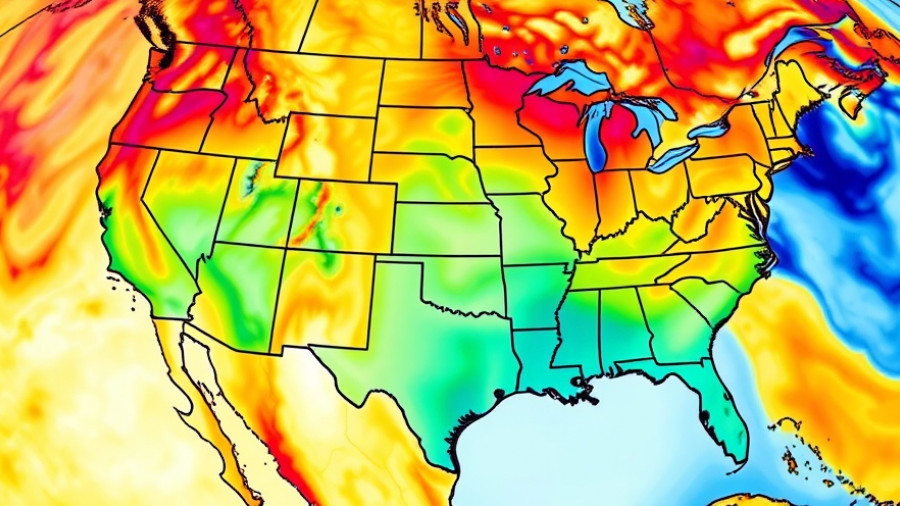
California's Weather Transition: From Wet October to Warm November
The past month has offered Californians a refreshing change of pace with a notably cool and wet October, particularly across the central regions of the state. As we move into November, however, a significant shift is expected, bringing with it warmer and drier conditions that could change the outdoor landscape and community activities.
What Changed From October to November?
Over the last 30 days, California saw considerable precipitation that was both beneficial and unusual for this time of year. According to climatetoolbox.org, the statewide average for rainfall exceeded long-term averages, blessed by several rain events due to persistent warm ocean temperatures influencing the atmosphere.
As we transition into November, strengthened weather patterns are leading to predictions of extensive ridging across the region. As these patterns take hold, California is projected to experience consecutive warm and dry days throughout the month.
Anticipating Warmer Days Ahead
Forecasts suggest unmistakable warmth in the days to come, with some areas, particularly in Southern California, likely to see temperatures rise significantly above the seasonal norm. The average maximum temperature is expected to hover around 22°C (approximately 72°F), with some days potentially more vigorous. This shift offers a stark contrast to the cooler October temperatures that dominated the state.
Moreover, daytime sunshine will be abundant, averaging about 7 hours a day, providing perfect conditions for outdoor activities such as hiking and community events.
Preparing for a Drier Season
While October provided some reprieve against potential wildfire hazards with abundant rainfall, the drier days of November could impact fire management strategies moving forward. With an average of only four rainy days and about 51 mm of precipitation expected throughout the month, residents might need to be vigilant as the drier conditions could rekindle fire risks in more arid regions.
This weather outlook underscores the importance of preparation and awareness as Californians navigate their plans for the upcoming month. Reportedly, this shift in weather should lead to a quieter fire season than initially anticipated.
Recommendations for the Community
As Californians gear up for the warmer and drier days ahead, it might be wise to consider outdoor outlines during the balmy afternoons. Parks and recreational areas could become increasingly popular, as the pleasant weather invites residents to explore and engage with their surroundings.
Additionally, keeping an eye on weather forecasts will allow individuals to adapt their climate-sensitive activities. Strategies for maintaining fire safety during this warmer weather, including reducing potential fire hazards in yards and gardens, will be essential for communal safety.
Conclusion: Abundant Sunshine Ahead!
This November promises a transition from the cooler, wetter conditions of October to a warmer and more inviting climate across California. With increased sunshine and reduced rainfall, it presents a perfect opportunity for outdoor adventures and community gatherings, while also reminding us of our seasonal fire management practices.
 Add Row
Add Row  Add
Add 




Write A Comment